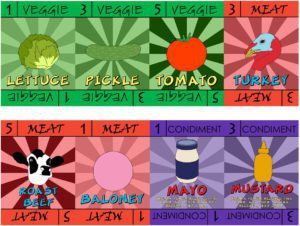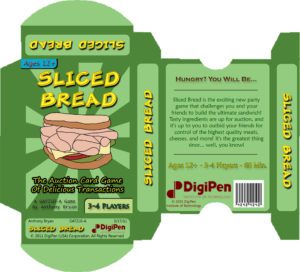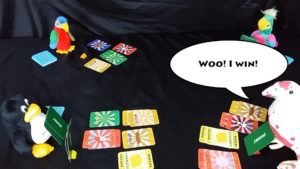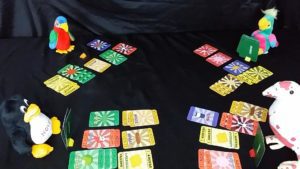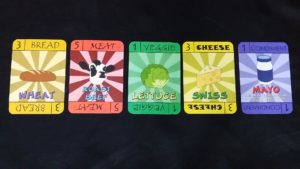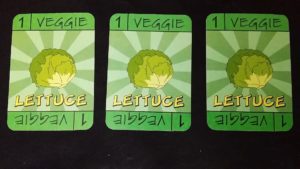 Sliced Bread is an auction card game for 3-4 players. The game uses a simple set of mechanics to deliver an engaging social experience. It is a game that encourages players to interact with each other, rather than focus on the game’s ruleset.
Sliced Bread is an auction card game for 3-4 players. The game uses a simple set of mechanics to deliver an engaging social experience. It is a game that encourages players to interact with each other, rather than focus on the game’s ruleset.
Overview – Project Details
Development Time: 1 Month
Platform: Physical
Roles: Designer, Artist
Tools: Photoshop
Video – Gameplay (Introduction & Tutorial)
Overview – Synopsis
One of the best things about board games it that they serve as an excellent platform for friends to get together and socialize. To this end, I wanted to create a game that facilitates players interacting with each other more-so than being focused on the mechanics of the game. Sliced Bread is a card game that attempts to facilitate this via several mechanics. At its heart, Sliced Bread is an auction game – players take turns bidding on different sandwich ingredients. Whoever has the most delicious sandwich at the end, wins. Players take turns being the auctioneer, goading other players into spending as much money as possible on their ingredient. After a player wins the auction, the auctioneer collects that money, in turn giving them more buying power for future rounds.
Details – Design Process
The central mechanic goal for a social game should be simple. If players are focused on figuring out the rules, they are not focused on the other players. “Match Three” is a popular system, especially in more casual games. It’s a simple enough system that players can focus their attention on other aspects of the game. For the type of game I wanted to create, it’s fantastic. There’s enough going on that players are kept interested in the game, trying to figure out who would benefit most from an ingredient, deciding how much to spend, etc., but the concepts are easy enough to do while having a conversation.
Many board and card games fall into a problem where once a player starts to win, they keep a clear advantage the rest of the game. A game should give players a constant feeling of progression, but still keep the players feeling like it’s a close game. The method I decided to use to help reach this goal was the currency system. Every time a player gains an ingredient, they make themselves weaker by giving up currency (they are thus less able to buy another ingredient), while making another player stronger by giving them more money to buy ingredients. In the auction phase, players steadily get a supplement of cash every time they are the auctioneer. In the second phase, every time a player loses an ingredient, they are given a significant amount of cash to compensate.
Playtesting this project was different from many other projects I’ve done, because I was focused primarily on observing people’s moods and conversations. The goal in this project was to create a social experience, so if players were focused intently on their cards, even if they were enjoying the game, it wouldn’t be the experience I was trying to craft. The most successful iterations were the ones where people were not focused on the game, but instead on their friends. I originally had many more ingredients, and a few more food groups, and while it added more options to the game, it detracted from the experience compared to a more streamlined, smaller version.
Details – Post-Mortem
Sliced Bread was extremely successful in accomplishing my design goals. This is one of my favorite games to play with friends. It is a fantastic social game. When I submitted this game to my professor at DigiPen, he actually kept that copy instead of returning it after grading! I’ve had to make more than a few copies of the game to give to friends. More than anything, I think this has been the best indicator that I’ve produced a quality game.
Gallery
Download – Full Game
Would you like to play this physical game? You can download all art assets and the complete ruleset here.
Are you from a game studio? Please contact me to request a full physical copy of the game for free!
